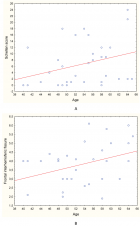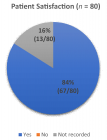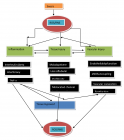Table of Contents
Role of yoga in Parkinson’s disease-A comprehensive update of the literature
Published on: 26th May, 2020
OCLC Number/Unique Identifier: 8605987262
Parkinson’s disease (PD) is a neurodegenerative disorder characterized by progressive degenerative motor symptoms (e.g., tremors, impaired balance and gait) and nonmotor symptoms (e.g., fatigue, sleep disturbances, pain) that can negatively influence health and mental wellbeing by decreasing quality of life. It affects nearly 10 million people and more and more cases are diagnosed because of the advancement seen in movement disorder clinics and diagnostic tools worldwide. Individuals with PD also complain about anxiety arising out of these symptoms of postural instability, low back pain etc., which may lead to increased risk of falls and fall related injuries of brain, bone or other organ systems. Stress is one factor which has been shown to directly correlate to neurodegenerative pathology. Ways to reduce stress at a given point of time and across one’s life span is considered to be a prime necessity in today’s world. Various body-mind exercises like yoga, tai chi, qi gong, tango, ballet etc., has been in research for quite some time now, which has shown benefits in PD patients. In this article evidences related to yoga and its role in PD will be reviewed in a detailed fashion.
PISA Syndrome-Orthopedic manifestation of a neurological disease?
Published on: 26th May, 2020
OCLC Number/Unique Identifier: 8603897033
Pleurothotonus, commonly known as Pisa Syndrome (PS), is a rare neurological disorder characterized by lateral bending of the trunk with a tendency to lean to one side. This is typically mobile and resolves in supine position. It often presents as an incapacitating symptom of underlying neurodegenerative conditions like Parkinson’s disease, alzheimer’s disease, multisystem atrophy, dementia with Lewy bodies, progressive supranuclear palsy and even subacute sclerosing panencephalitis. It is known to be associated with neuroleptics, dopaminergic agents, valproic acid and lithium. PS is also seen in neurosurgical disorders like subdural hematoma, normotensive hydrocephalus, or as a late complication of pallidotomy in patients with PD. It can present either as an acute emergency or can develop gradually over time.PS tend to happen in coronal plane and can be controlled and managed if diagnosed in early stage. However, a chronic form known as “camptocormia” occurs often in a combined fashion with anteroposterior flexion which can improve to some extent, remain stable or even get worse. Pathophysiologic mechanism is not completely understood. This review will discuss all the updated literatures published in PS in terms of prevalence, pathophysiology, clinical manifestation, and treatment modalities.
Comparison of resting-state functional and effective connectivity between default mode network and memory encoding related areas
Published on: 24th April, 2020
OCLC Number/Unique Identifier: 8589567444
Currently brain connectivity modelling, constructed from data acquired by non-invasive technique such as functional magnetic resonance imaging (fMRI), is a well-received approach to illustrate brain function. However, not all connectivity models contains equal amount of information. There are two types of connectivity model that could be constructed from fMRI data, functional and effective connectivity. Effective connectivity includes information about the direction of the connection, while functional connectivity does not. This makes interpretation of effective connectivity more meaningful than functional connectivity. The objective of this study is to show the improvement in interpretability of effective connectivity model in comparison to functional connectivity model. In this study, we show how the difference in the information contained within these two model impacts the interpretation of the resulting connectivity model by analyzing resting-state fMRI data on episodic memory-related cognitive function using CONN Toolbox bivariate correlation measurement for functional connectivity analysis and Tigramite causal discovery framework for effective connectivity analysis on an episodic memory related resting-state fMRI dataset. The comparison between functional and effective connectivity results show that effective connectivity contains more information than the functional connectivity, and the difference in the information contained within these two types of model could significantly impact the intepretation of true brain function. In conclusion, we show that for the connectivity between specific pair of brain regions, effective connectivity analysis reveals more informative characteristic of the connectivity in comparison to functional connectivity where the depicted connectivity lack any additional characteristic information such as the direction of the connection or whether it is a unidirectional or bidirectional. These additional information improve interpretability of brain connectivity study. Thus, we would like to emphasis the important of brain function study using effective connectivity modelling to obtain valid interpretation of true brain function as currently a large body of research in this field focuses only on functional connectivity model.
Obesity may increase the prevalence of Parkinson’s Disease (PD) while PD may reduce obesity index in patients
Published on: 6th April, 2020
OCLC Number/Unique Identifier: 8589557020
Objective: Currently, Parkinson’s disease (PD) is becoming more common among younger people of ages from 30 – 40 years. The incidence is higher among patients with higher body mass index (BMI), and some reports had it that Obesity is a risk factor for PD while some reported that there is no relationship between obesity and PD. PD patient at the time of diagnosis has an above-normal BMI but which goes below normal as the disease progresses. Therefore, it is essential to explore the relationship between PD and Obesity.
Methods: 349 outpatients and inpatients with PD were selected from Jiangsu University Affiliated People’s Hospital from January 2014 to December 2018, while 74 inpatients with non-cerebrovascular illness in the same period were selected as the control group. According to Hoehn-Yahr grade, Parkinson’s patients were divided into three groups. The height, weight, waist and hip circumference, total cholesterol (TC), Total Glycerol (TG), high-density lipoprotein cholesterol (HDL-C) and low-density lipoprotein cholesterol (LDL-C) were measured and recorded. The relationship between the severity of Parkinson’s disease and blood lipids was evaluated.
Results: The BMI of patients with PD in the early stage was higher than that of the control group, but lower than that of the control group in the late stage, and the level of blood lipid in the patients with early PD was significantly higher than that in the control group and patients with advanced PD, especially in TG. The waist circumference and hip circumference of the patients with early PD were higher than those in the control group, but there was no statistical difference.
Conclusion: i) Obesity may increase the prevalence of PD. ii) The BMI of patients with PD shows two-way changes in different periods. iii) The BMI is higher and cholesterol is more elevated in the early stage of patients with PD, while at the advanced stage of the disease, the BMI and lipid levels of the patients showed a downward trend, which may be associated with a metabolic syndrome associated with dopamine depletion.
Do genes matter in sleep?-A comprehensive update
Published on: 5th March, 2020
OCLC Number/Unique Identifier: 8556126395
Sleep is considered as a complex process in human beings and is least understood mechanism. Role of sleep in synaptic plasticity remains a debatable topic till date. Sleep is influenced by genetic background of the individual. EEG done in human sleep showed strong influence of genetic factors. A handful of familial analyses involving specific gene loci and twin studies has been done in this regard. In this review article focused discussion on genetic contribution to sleep phenotypes, twin and familial linkage studies and effect of genetic variation on sleep will be covered
Brain washing systems and other circulating factors in some neurological condition like Parkinson (Pd) and vascular and diabetic dementia: How dynamics- saturation of clearance can act on toxic molecule?
Published on: 24th January, 2020
OCLC Number/Unique Identifier: 8527419991
Observing the epidemiology of some neurodegenerative disease is interesting to verify some similarity and also related advanced or non-advanced countries and related diet habits. There are relationship between this conditions and diet habits? Some neurological condition related neuro-degeneration can be related to a complex dynamic system like the glymphatic system and the brain vascular clearance. Failure in this system seem related to aggravates of some condition like PD or vascular or diabetic dementia. (Animal model). But what happen if this dynamic system is saturated? A deep investigation related the specific role in CNS make possible to search new innovative strategies. The social economic cost for the neurodegenerative disease is the right tool to new research.

If you are already a member of our network and need to keep track of any developments regarding a question you have already submitted, click "take me to my Query."




















































































































































